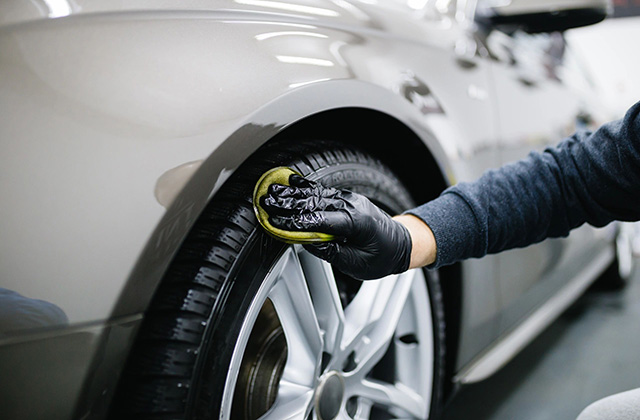
Removing car paint is necessary when repainting or restoring an older car and that’s the time you will apply our paint protection. If you’re asking a professional to repaint or restore your car, then you won’t need to worry about doing it yourself. However, if you’re working on your car yourself, knowing how to safely and efficiently remove the paint from it will come in handy.
There are several different methods for removing paint from a car. Shops tend to use machines, such as a high-powered spray that will chip the paint away down to the metal of the car. However, removing paint by yourself at home is usually done manually with sandpaper or with a chemical stripper. Removing manually will, by far, require the most work, and will probably take several days to complete.
Using a chemical method, such as using a chemical paint stripper, is much faster, but must be done carefully so that only the appropriate areas or parts of the car are affected by the stripper.
Warning: It can be dangerous to use paint thinner to take paint off fiberglass is because fiberglass is porous, and the risk of having a solvent soak into the pores to cause discoloration, corrosion, and/or structural damage is high. But there are fiberglass safe paint strippers out there, which, if used properly and with care, can shorten the task at hand.
Depending on the method you choose, with some diligence, craftsmanship, and safety equipment, you can successfully strip the paint off the fiberglass body of your vehicle without causing any damage to the fiberglass itself. Let’s start by using a sander.
Method 1 of 2: Use a dual action sander
Materials Needed
- Acetone
- Cleaning rags
- Drop cloths
- Dual action sander (D/A sanders usually require an air compressor)
- Dust mask or painter’s mask
- Polishing cloth
- Rubber gloves (optional)
- Safety goggles
- Sandpaper of different grits (100 grit and 1,000 grit is best)
- Water
Step 1: Prepare your work area. Prepare your work area by spreading drop cloths to cover the entire workspace.
Since sanding creates lots of fine dust, it is important to remove or cover anything from the workspace you don’t want to get dirty or damaged.
Make sure the vehicle’s windows are all the way up and the doors are tightly shut so you don’t damage the interior. If you’re only working on a certain part of the car, such as a spoiler, you might want to remove it from the car so you don’t damage any parts that are connected to it.
Additionally, if you’re sanding the entire vehicle, make sure you take precautions to protect or remove certain parts of the vehicle that you don’t want to sand. You will want to wear clothes you do not care about and are accustomed to wearing for messy tasks.
Step 2: Apply your protective gear. You don’t want to breathe in fine dust and risk irritating or damaging your respiratory system, nor do want to get dust in your eyes.
It is imperative to have safety goggles and a dust mask or painter’s mask.
Step 3: Sand the top coat of paint. Begin the first round of sanding with a medium grit sandpaper (100 grit is probably the best option here).
Make sure you begin lightly and slowly until you get the feel for the movement.
Once you get into a groove, make sure you don’t sand to hard or too fast in any area; try to keep an even pressure.
Make sure you only sand off the top coat of the paint, and that the job is thorough and completely even.
Warning: Try not to dig any curved surfaces in the fiberglass with the sander. The vehicle’s body will be scarred or misshapen, and further repair (costing you time and money) will be necessary.
Step 4: Polish the laminate. Once you’ve finished the first round of sanding, you’ll want to prepare for the second round.
Attach super-fine grit sandpaper, of somewhere around 1,000 grit, to your dual action sander. The super-fine grit sandpaper will smooth and polish the laminate on the fiberglass.
Again, you will need to adjust to the new feel of the sander with new sandpaper, so start out lightly and slowly until you get in the groove again.
Continue sanding until everything is smooth and evenly sanded.
Step 5: Clean area with acetone. Clean the area(s) of the fiberglass you worked on with acetone and a soft cloth.
For more information apply the acetone to the cloth and wipe until the area is clean and no dust is left behind.
Be sure your workspace is well ventilated and that you keep your protective gear on so you don’t breathe solvent fumes or get them in your eyes.
You might want to wear rubber gloves for this task to protect your skin from irritation.
Warning: Do not drench the cloth(s) in acetone to prevent the acetone from soaking into the pores of the fiberglass, which can cause discoloration, corrosion, and/or structural damage.
Step 6: Wash and dry the sanded area. After you’re done cleaning the fiberglass with acetone, get a bucket of water and a rag and thoroughly wash and dry the worked surfaces again. The fiberglass is now ready to be repainted or repaired.